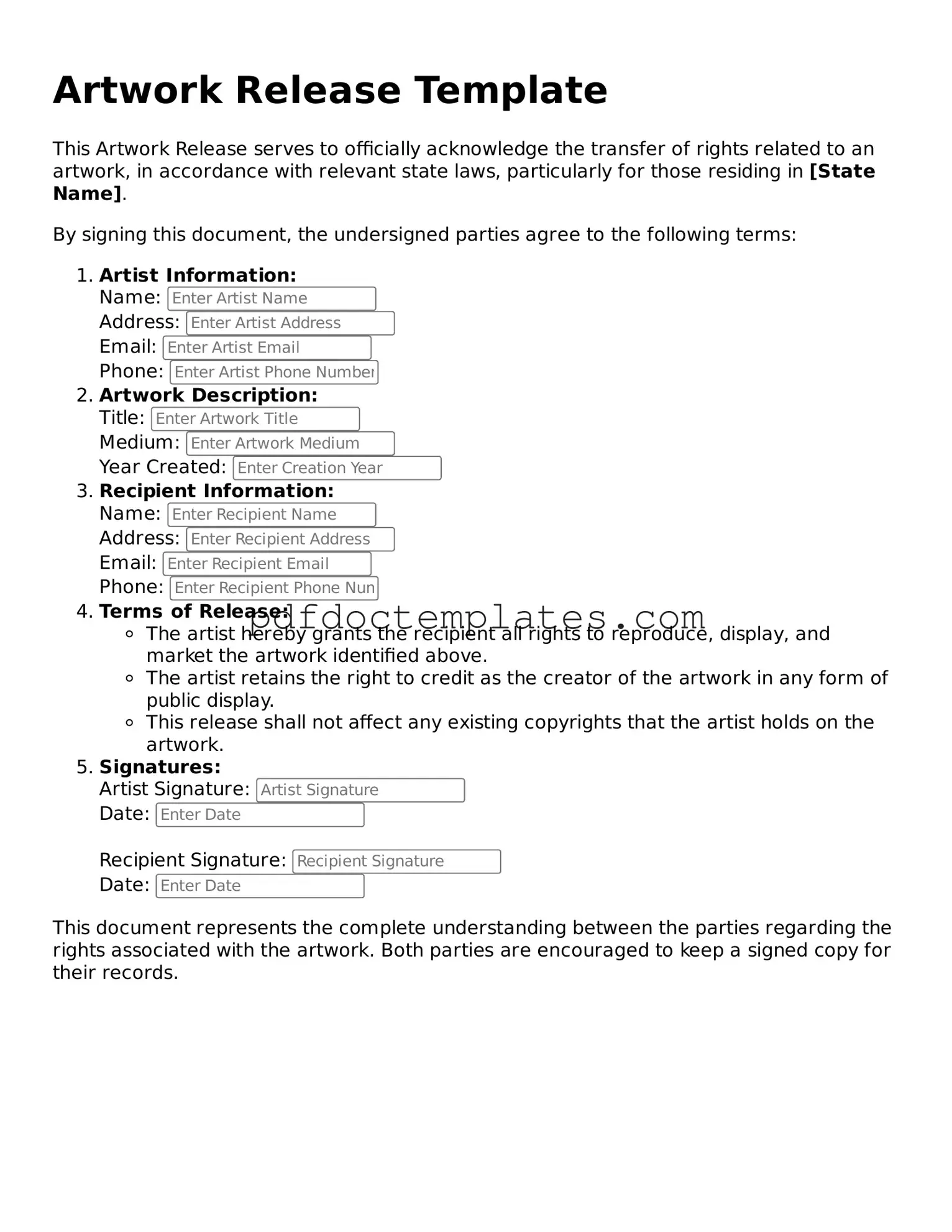Printable Artwork Release Template
The Artwork Release form is a legal document that allows artists to grant permission for their work to be used by others. This form ensures that the rights of the artist are protected while also providing clarity on how the artwork can be utilized. If you're ready to proceed, fill out the form by clicking the button below.
Access Your Document
